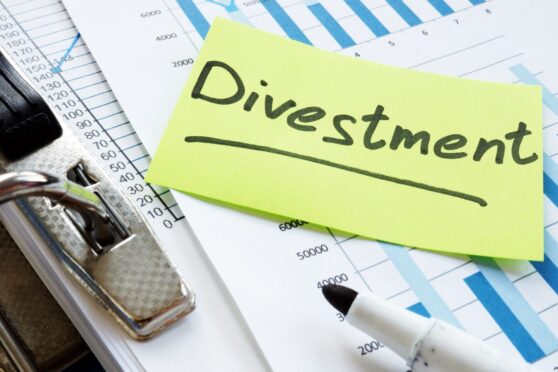Corporate divestitures are now a fundamental part of corporate strategy, undertaken on a “proactive” rather than a “reactive” basis, with executives divesting non-core or underperforming assets to unlock value, increase portfolio profitability, and enhance organisational efficiency.
-
Some Press and Journal online content is funded by outside parties. The revenue from this helps to sustain our independent news gathering. You will always know if you are reading paid-for material as it will be clearly labelled as “Partnership” on the site and on social media channels.
This can take two different forms.
“Presented by”
This means the content has been paid for and produced by the named advertiser.
“In partnership with”
This means the content has been paid for and approved by the named advertiser but written and edited by our own commercial content team.
However, divestitures can be tricky as they usually require assets which are deeply integrated in the organisation to be disentangled and sold, listed or “spun out”. Here we provide some useful tips on how to execute a successful divestment.
Why Divest?
Divestitures, also known as demergers, are transactions in which a company sells or spins off part of its business to another entity. They can be a powerful tool for creating shareholder value so long as they are carefully planned and well-executed. The most common reasons for undertaking a divestiture are to improve operational efficiency, improve liquidity within the group (e.g. as an opportunity to “cash out” on non-core assets), and in response to regulatory or geopolitical concerns.
What is Being Divested?
Divestitures involve complex legal, financial, operational, and organisational elements. Even if businesses are legally separate, they may be operationally intertwined. It is therefore essential, before effecting a divestiture (usually at the portfolio evaluation stage), to identify what form of divestiture is deliverable and which businesses, processes, assets, systems and entities are capable of being sold or spun out.
If a business is to be sold or listed, executives are also faced with the challenge of communicating the value of the assets to be carved not only to prospective buyers and investors, but also internal and external stakeholders, such as employees, customers, suppliers, regulators, and shareholders. Having a clear understanding of the assets being divested at an early stage is imperative in developing an effective communication strategy.
The Structure of Divestitures
Divestitures can take many forms and are generally distinguished by whether the shareholders of the parent will own the shares in the divested business unit or entity, and whether the divested entity is to be sold or listed on public markets.
Once the structure of the divestiture has been decided upon, the legal steps required to effect the divestiture may involve a series of distributions, capital reductions, share transfers, liquidations or schemes of arrangements. There is no substitute for good legal and tax advice as the structuring may be complex, the steps numerous and resources required extensive.
Conclusion
Divestitures can be a source of competitive advantage for companies that want to optimise their performance and growth. With dealmaking sentiment more optimistic in Aberdeen, we expect to see an uptick in divestitures in 2024 as executives seek to manage portfolios and focus their attentions on better performing assets.

